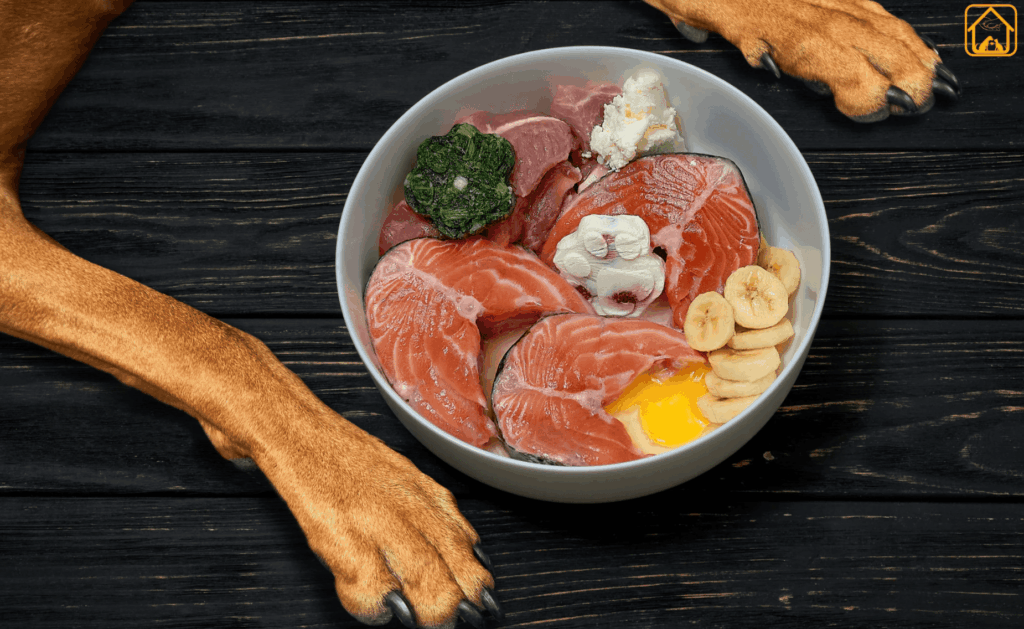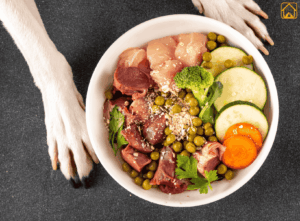Understanding When Dogs Become Seniors
What counts as “senior” for a dog? It’s not a set age like it is for humans. In fact, breed and size matter a lot. Small breeds often don’t hit their senior stage until around 10 or 11 years old. Larger dogs considered seniors as early as 7 or 8. Giant breeds can age even faster.
Why the difference? Smaller dogs tend to live longer, and their bodies age more slowly. Larger breeds age faster and face age-related changes sooner. This isn’t just about numbers, it’s about how their bodies change and what they need from us
- Small Breeds (under 20 lbs): Senior at 10–11 years
- Medium Breeds (20–50 lbs): Senior at 8–10 years
- Large Breeds (50–90 lbs): Senior at 7–8 years
- Giant Breeds (90+ lbs): Senior as early as 5–6 years
Signs Your Dog Is Entering Their Senior Years
- Slower movement or reluctance to exercise
- Gray hair around muzzle or eyes
- Changes in appetite or weight
- More naps, less play
My neighbor’s little Terrier didn’t show her age until she was almost 12, but my own Labrador started slowing down at 8. Every dog is different. The key is to watch for these subtle changes and adjust their senior dogs’ diet before problems start.
Key Nutritional Requirements for Senior Dogs

Older dogs need a different nutritional approach than younger pups. Their bodies process food differently, and issues like arthritis, kidney function, and digestion come into play. Here’s what matters most in a senior dogs diet:
- High-Quality Protein: Helps maintain muscle mass, which naturally declines with age. Look for real meat, fish, or eggs as the primary protein source.
- Moderate Calories: Senior dogs often move less, so they need fewer calories to prevent weight gain, but not too few, or they risk losing muscle.
- Digestible Carbohydrates & Fiber: Fiber aids digestive health, which can get sluggish. Easily digestible grains or veggies can be gentle on sensitive stomachs.
- Balanced Fats: Healthy fats like omega-3s support joint health, skin, and coat.
- Vitamins & Minerals: Antioxidants (like vitamin E, vitamin C, and selenium) help fight cell aging. Calcium and phosphorus matter for bone health, especially in older dogs.
| Nutrient | Why It Matters | Tips |
| Protein | Maintains muscle, supports healing | Choose high-quality animal proteins |
| Fat | Energy, healthy skin and coat | Look for omega-3 rich sources (fish oil, flaxseed) |
| Fiber | Digestive health | Consider beet pulp, pumpkin, or prebiotics |
| Antioxidants | Immune and cognitive support | Blueberries, spinach, vitamin E supplements |
| Water | Prevents dehydration | Wet food, multiple water bowls, pet fountains |
Also, read our Dog Nutrition Guide to help your dog stay healthier and live a little longer.
Addressing Individual Health Concerns
If your dog has kidney, heart, or liver problems, their vet may recommend a prescription diet with adjusted sodium, phosphorus, or protein levels. For dogs with sensitive stomachs, foods with added prebiotics and probiotics can improve comfort and digestion.
How Aging Affects Appetite, Digestion & Weight
Ever wondered why your old dog’s eating habits suddenly change? Aging brings shifts in metabolism, taste, and even how food smells. Sometimes it’s just pickiness, but it can also signal dental pain, reduced senses, or illness.
Common Changes in Aging Dogs
- Reduced Appetite: Loss of smell or taste, dental disease, or underlying health issues might make food less appealing.
- Weight Fluctuations: Some seniors gain weight due to lower activity which may leads to obesity, while others lose weight from muscle loss or poor absorption.
- Digestive Troubles: Constipation or diarrhea may pop up due to slower gut movement or less efficient digestion.
My old Beagle started ignoring her dry kibble until we soaked it in warm broth. A little tweak made a huge difference. If you notice sudden changes, always rule out medical problems first.
Choosing the Right Food: Commercial, Prescription, and Homemade Diets
When it comes to the senior dogs diet, you’ve got lots of choices. Let’s break them down:
Commercial Senior Dog Foods
- Specifically formulated for aging dogs, usually lower in calories, higher in fiber, with added joint and brain support nutrients.
- Look for well-known brands with veterinary nutritionists on staff (e.g., Blue Buffalo, Orijen, Hill’s Science Diet).
- Check the label for real protein sources, not just fillers.
Prescription Diets
- Designed to manage chronic conditions (kidney, heart, diabetes, arthritis).
- Only use under veterinary guidance, these adjust protein, phosphorus, sodium, and sometimes calories for specific needs.
Homemade Senior Dog Diets
- Let you control every ingredient (great for picky eaters or allergies).
- Must be balanced with the help of a veterinary nutritionist, sometimes homemade dog food alone often lacks key nutrients.
- Popular options: lean meats, cooked eggs, rice, pumpkin, carrots, green beans. Avoid onions, garlic, grapes, and high-fat cuts.
You know what’s funny? My friend’s old Dachshund only perked up for turkey and sweet potato, so her vet helped tweak a homemade recipe just for him. Every dog really is unique!
Protein, Calories, and Special Nutrients for Older Dogs
Let’s get into the nitty-gritty of what makes a senior dogs diet truly supportive.
Protein: How Much and What Kind?
- Contrary to old myths, senior dogs need more high-quality protein, not less, to protect their muscles. Look for foods with 28–32% protein (dry matter basis).
- Best protein sources: chicken, turkey, fish, eggs, lamb.
Calories: Finding the Sweet Spot
- Most seniors need fewer calories due to lower activity.
- But frail or underweight dogs might need calorie-dense options. Monitor weight monthly and adjust as needed.
Special Nutrients
- Omega-3s (EPA/DHA from fish oil): support joints, heart, and brain
- Glucosamine & chondroitin: joint care (may help with arthritis; evidence is mixed but generally safe)
- Prebiotics & probiotics: aid digestive health
- Antioxidants: protect against cell aging
Supporting Joint, Cognitive & Digestive Health in Older Dogs
Old age comes with a few creaks, stiff joints, forgetful moments, and sometimes, a less-than-happy tummy. The good news is that a proper dog diet can make a world of difference for your dog’s comfort and quality of life.
Joint Care for Older Dogs
- Glucosamine & Chondroitin: These are the classic joint supplements for senior dogs. They’re found in many high-quality senior dog foods and can help ease arthritis aches.
- Omega-3 Fatty Acids: Found in fish oil, these battle inflammation and help both joints and the brain. Look for EPA and DHA in ingredient lists.
- Maintain a Healthy Weight: Less weight means less stress on aging hips and knees. This is where a diet dog food for older dogs shines, lower in calories, high in nutrients.
Don’t wait for your dog to suffer from hip problems, take precautions early to keep their joints healthy and pain-free.
Brain & Cognitive Support
- Antioxidants (Vitamins E & C): These help delay mental aging and keep your dog’s mind sharp. Many senior diets include them; some even add special “cognitive blend” ingredients.
- Omega-3s: Once again, these support brain health, think of them as brain food for your dog.
- Mental Enrichment: Nutrition can only go so far. Combine a senior dogs diet with puzzle toys, gentle training, and new experiences.
Digestive Health for Senior Dogs
- More Fiber: Helps with constipation and keeps digestion moving. Look for beet pulp, pumpkin, or brown rice in ingredient lists.
- Prebiotics & Probiotics: These support healthy gut bacteria, which is especially vital as your dog ages. Some foods are fortified with them, or you can ask your vet about safe supplements.
- Easy-to-Digest Formulas: For dogs with sensitive stomachs or frequent tummy upsets, pick a senior diet dog food focused on digestibility. Limited-ingredient diets can also help.
Every senior is unique, what works for a spry little terrier may not suit a slow-moving Lab. The key is to watch for changes in movement, alertness, and digestion, and to adjust your senior dogs diet and care as needed. Regular checkups, gentle exercise, and a diet full of joint, brain, and gut-supporting nutrients can add years of tail wags.
Feeding Schedules, Portion Control & Senior Dog Feeding Charts
Feeding a senior dog isn’t just about what goes in the bowl, it’s about when and how much.
How Often Should You Feed Senior Dogs?
- Most older dogs do best with two smaller meals per day. Some need three or more tiny meals if they have digestion or appetite issues.
- Free-feeding (leaving food out all day) makes it hard to track intake and spot problems.
Portion Control & Senior Dog Feeding Guide
- Use a senior dog feeding chart (by weight and condition) as a starting point, but tailor it with your vet’s advice.
- Weigh your dog monthly, adjust portions if they gain or lose unexpectedly.
| Weight (kg) | 2 Meals/Day(grams per meal) | 3 Meals/Day(grams per meal) |
| 5 kg | 60 g – 80 g | 40 g – 60 g |
| 10 kg | 120 g – 160 g | 80 g – 120 g |
| 20 kg | 200 g – 260 g | 130 g – 180 g |
| 30 kg | 280 g – 360 g | 180 g – 240 g |
| 40 kg | 350 g – 450 g | 230 g – 300 g |
| 50 kg | 420 g – 540 g | 270 g – 360 g |
| 60 kg | 480 g – 620 g | 320 g – 420 g |
| 70 kg | 540 g – 700 g | 360 g – 480 g |
| 80 kg | 600 g – 780 g | 400 g – 520 g |
| 90 kg | 650 g – 850 g | 430 g – 570 g |
These are only rough guides, always check with your vet for your dog’s unique needs.
Tips for Picky Eaters and Dogs with Dental Issues
What if your old dog just won’t eat, or struggles with chewing? I’ve seen this a dozen times in my own pets, and it’s tough. Here’s what helps:
- Warm up food slightly to boost aroma (microwave for 10–15 seconds, test before serving)
- Add low-sodium chicken broth or a spoonful of canned food for extra flavor
- Try softening dry food with warm water or broth
- Use senior dog feeding bowls with low sides or raise them for comfort
Dental Issues
Missing teeth? Chewing struggles? No problem. Wet, pasty or gently cooked homemade meals can make eating painless. Some brands offer “soft kibble” or “moist chunks”, perfect for toothless friends. You can also soak kibble in warm water or broth for a tasty, mushy meal. Stick with soft, easily swallowed foods and always check for choking hazards.
- Best dog food for older dogs with bad teeth: Look for soft canned food, dehydrated meals rehydrated with water, or gently cooked diets.
- Feeding tip: Serve food in shallow, wide bowls or even on a plate for easy access.
Whether your dog is tiny, huge, or missing a few chompers, there’s a way to keep them happily fed and healthy. Don’t be afraid to get creative, and always check with your vet before making major changes to your senior dog’s diet.
Transitioning to a Senior Dog Food: When & How
“When should I start feeding my dog senior food?” It’s one of the most common questions, and the answer is less about a birthday and more about behavior and health.
- When to Switch: Most dogs benefit from a senior dogs diet when they show signs of slowing down, gain or lose weight unexpectedly, or after a vet recommends it. For small breeds, this might be age 10 or older; for large breeds, sometimes as early as 7.
- How to Transition: Change your dog’s food slowly over 7–10 days. Start with 25% new food and 75% old, then gradually increase the new while decreasing the old. This gentle transition helps prevent stomach upset and gives you time to watch for any reactions.
- Monitor Closely: Keep an eye on appetite, stool quality, energy, and weight. If your dog has a sensitive stomach, extend the transition to two weeks or more.
- Tips for Success: Mix with warm water or broth for extra aroma. Stick to a consistent senior dog feeding schedule. And remember, patience pays off, older dogs can be set in their ways!
Sometimes, your dog will let you know the transition isn’t working, loose stool, vomiting, or refusing the new food. If this happens, pause and check with your vet. It’s all about finding the right fit, not just following the calendar.
FAQs: Senior Dog Diet, Feeding Challenges, and Nutrition
1. When should I start feeding my dog senior food?
Most vets recommend switching to a senior dogs diet when your dog shows signs of aging, typically around 7 for large breeds and 10 for small breeds. Monitor their energy, weight, and activity for clues.
2. Is senior dog food necessary, or can I keep feeding adult food?
Senior dog food often has nutrients tailored for aging bodies, like extra fiber, joint support, or fewer calories. If your dog is healthy and thriving on adult food, it might be okay, but talk to your vet before deciding.
3. What is the healthiest dog food for senior dogs?
The healthiest senior dogs diet uses high-quality protein, moderate calories, digestible carbs, and added Omega-3s. Brands like Hill’s, Blue Buffalo, and Orijen offer strong options, but the best food is the one that fits your dog’s unique needs and health status.
4. What should I feed an old dog that is losing weight?
Choose calorie-dense, highly digestible foods with quality protein. Try adding a bit of canned food, cooked chicken, or healthy oils. But sudden weight loss can signal illness, see your vet promptly.
5. My senior dog won’t eat, what can I do?
First, rule out dental or medical problems. Warm up their meals, offer soft foods, try new textures, or add broth for aroma. Some dogs respond to homemade diets or rotating flavors. If they still refuse, your vet can help with appetite stimulants or further tests.
6. Can I make a homemade senior dog diet?
Yes, but always work with a veterinary nutritionist to ensure balance. Homemade diets can be great for picky eaters or allergies, but missing key nutrients can be risky. Ask your vet for a senior dog diet homemade plan.
7. What treats and supplements are best for old dogs?
Low-calorie veggies, fruits (like blueberries, apple slices), and soft, senior-friendly treats work well. For supplements, Omega-3s and glucosamine can help with joints, but only use products formulated for dogs and approved by your vet.
8. How do I use a senior dog feeding chart?
Start with your dog’s weight, age, and activity level. Adjust based on monthly weigh-ins, appetite, and body condition. Your vet can help tailor a senior dog feeding chart by weight and health needs.
9. Should I use special bowls for my senior dog?
Yes, senior dog feeding bowls with non-slip bases, low sides, or raised stands can make eating easier, especially for dogs with arthritis or neck pain.
10. What if my senior dog has sensitive stomachs or food allergies?
Look for the best dog food for senior dogs with sensitive stomachs, these usually feature limited ingredients, added prebiotics, or hypoallergenic proteins. Homemade diets may also help, but always consult your vet for guidance.
Conclusion
There’s no one “perfect” senior dogs diet, just the one that keeps your best friend happy, mobile, and feeling loved. Remember, aging isn’t a disease. It’s a new chapter, and you get to help your dog write it.
Most importantly? Celebrate every meal, every tail wag, and every happy nap. You’re giving your senior dog the gift of comfort, companionship, and dignity. That’s what good nutrition is all about.And if you’re hungry for more science, visit the AVMA Senior Pet Care Guide.



